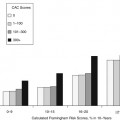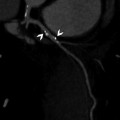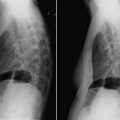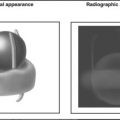Navigating the world of fitness supplements can feel overwhelming, with countless products promising to unlock your ultimate potential. Among the most popular are protein powder and creatine, yet many are unsure of their distinct roles. While protein is a familiar staple, the conversation around creatine for women is often filled with questions. Are they interchangeable? Do you need both? The answer lies in understanding the science behind how each supplement works to support your unique fitness goals.
The Science of Protein Powder: The Building Blocks
Protein is a fundamental macronutrient composed of amino acids. Think of these amino acids as the literal building blocks for almost every tissue in your body, especially skeletal muscle. When you engage in resistance training, you create microscopic tears in your muscle fibers. This process signals the body to initiate a repair process known as muscle protein synthesis (MPS).
To effectively repair and rebuild these fibers stronger and more resilient, your body requires a sufficient supply of amino acids. This is where protein powder becomes invaluable. Supplementing with a high-quality protein source, like whey or a plant-based blend, provides a concentrated, bioavailable dose of these essential building blocks precisely when your body needs them most—typically post-workout.
Choose protein powder if your primary goals are:
- Muscle Repair and Recovery: Providing the raw materials to heal and reduce muscle soreness after training.
- Meeting Daily Protein Intake: Active women have higher protein needs (approx. 1.2-1.7 grams per kilogram of body weight) that can be challenging to meet through whole foods alone.
- Supporting Lean Muscle Growth (Hypertrophy): Consistent resistance training paired with adequate protein intake is the scientific formula for building lean mass.
The Science of Creatine: The Energy Currency
Unlike protein, creatine is not a building block but an energy enhancer. Your body naturally produces this compound from three amino acids: arginine, glycine, and methionine. Its primary role is to support the rapid regeneration of adenosine triphosphate (ATP), your cells’ main source of energy.
During short, explosive movements like lifting a heavy weight or sprinting, your muscles rely on the phosphocreatine energy system. Your muscles have a small, readily available store of ATP. Once used, it becomes adenosine diphosphate (ADP). Creatine, stored in your muscles as phosphocreatine (PCr), donates a phosphate molecule to ADP, swiftly converting it back into usable ATP.
By supplementing with creatine monohydrate, you saturate your muscles’ phosphocreatine stores. This allows you to generate energy more rapidly, enabling you to perform more reps, lift heavier weights, or sprint with more power before fatigue sets in. This increase in work capacity is the direct stimulus for greater strength and muscle gains over time.
For years, misinformation has clouded creatine’s reputation, especially for women. However, hundreds of studies validate its safety and efficacy, debunking myths of bloating or “bulkiness.” When it comes to sourcing a pure, effective supplement, companies like gldn root have established themselves as experts in creatine specifically for the female body. They emphasize the importance of high-quality, micronized creatine monohydrate, ensuring women can harness its performance benefits without any unwanted side effects.
Getting the Dose Right: How to Measure Creatine
So you’ve invested in a tub of high-quality creatine monohydrate, ready to boost your strength and performance. You know the standard clinical dose is five grams, but then you’re faced with a common problem: your tub didn’t come with a scoop, or you’ve misplaced it. This immediately brings up the critical question of how to measure creatine accurately using what you have in your kitchen. Is a heaping teaspoon the right amount, or is it a level tablespoon? Getting the dosage correct is key to maximizing benefits and ensuring consistency in your routine. Don’t worry, we’re here to break down the simple, reliable methods—from using standard measuring spoons to other practical tricks—that will help you measure out a nearly perfect 5-gram serving every single time.
Choose creatine if your primary goals are:
- Increasing Strength and Power: Directly fuels muscular contractions for improved performance in the gym.
- Enhancing High-Intensity Exercise Capacity: Allows you to push harder during HIIT, CrossFit, or weightlifting.
- Accelerating Lean Muscle Gains: By enabling greater training volume, it indirectly contributes to muscle hypertrophy.
The Verdict: Building vs. Fueling
The debate of creatine vs. protein isn’t about which is superior, but which aligns with your immediate objective.
- Protein Powder BUILDS. It provides the raw materials for repair and growth.
- Creatine FUELS. It provides the energy to perform the high-quality work that stimulates that growth.
They work through completely different physiological pathways and are not mutually exclusive. In fact, they have a powerful synergistic effect. Taking creatine allows you to train harder, creating a greater stimulus for growth. Taking protein powder then provides the necessary resources to recover and adapt to that stimulus.
For the woman serious about transforming her physique and performance, the ideal strategy often involves both. If you must choose one, let your primary goal guide you. If you struggle to recover or meet your protein macros, start with protein. If your nutrition is on point but you’ve hit a strength plateau, creatine is your key to unlocking the next level of your fitness journey.
Stay updated, free articles. Join our Telegram channel

Full access? Get Clinical Tree







